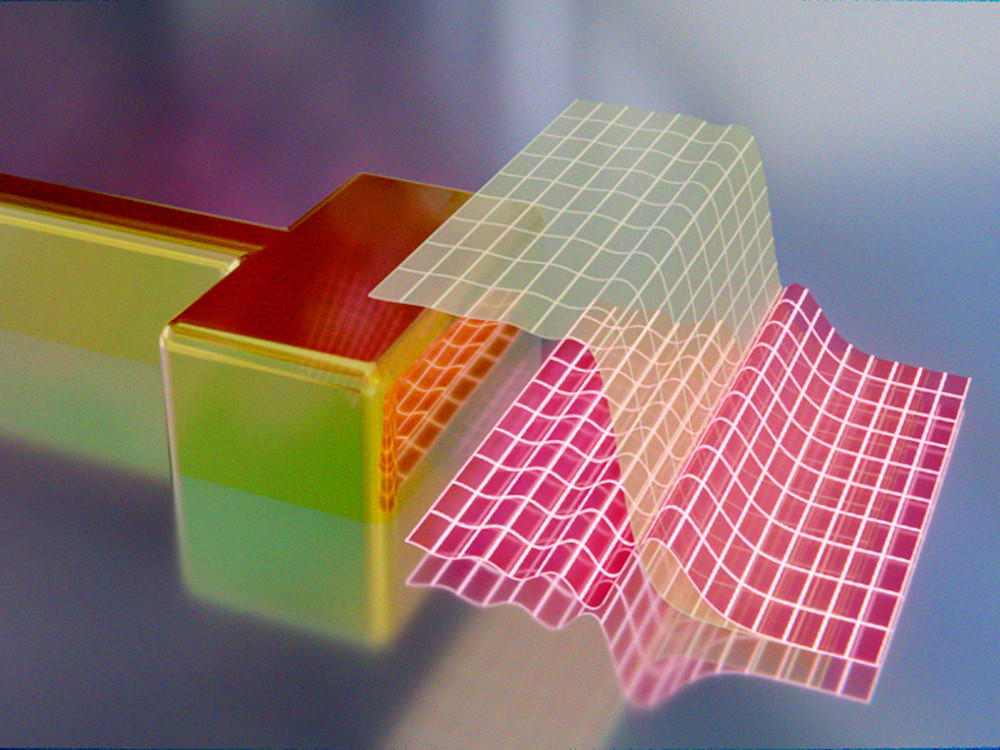
02 Oct Light and electrons: accelerating electronic circuits 1000-fold
Today, electrical semiconductor components usually operate at a maximum usable frequency of a few gigahertz. A future step would be the transition to optical circuits. If photons were used instead of electrons in computer chips, current research suggests that they could be up to 1000 times faster.
Plasmonic resonators, also known as ‘antennas for light’, are a promising approach. These are nanometer-sized metal structures in which light and electrons interact. Depending on their geometry, they can interact with different light frequencies. “The challenge is that plasmonic resonators cannot yet be effectively modulated, as is the case with transistors in conventional electronics,” explains Dr. Thorsten Feichtner, physicist at Julius-Maximilians-Universität (JMU) Würzburg in Bavaria, Germany. A JMU research team in collaboration with Southern Denmark University (SDU) in Odense has now taken a significant step forward in the modulation of light antennas: It has succeeded in achieving electrically controlled modulation, which should pave the way for ultra-fast active plasmonics.
Component from the nanofactory
Instead of trying to change the entire resonator, the team concentrated on changing the surface properties by electrically contacting a single resonator, a nanorod made of gold. An idea that, according to the researchers, is conceptually simple, but could only be realized with the help of a complex nanofabrication based on helium ion beams and gold nanocrystals.
Feichtner compares the effect to the principle of a Faraday cage: “Just as the electrons in a car struck by lightning collect on the outside and the occupants inside are safe, additional electrons on the surface influence the optical properties of the resonators.”
New field of research with potential
“But with this study, it is now possible for the first time to specifically design new antennas and exclude or amplify individual quantum effects,” says Feichtner.
In the long term, the researchers see even more applications: Smaller resonators promise optical modulators with high efficiency. In addition, the influence of surface electrons in catalytic processes can also be investigated with the system presented. This would provide new insights into energy conversion and energy storage technologies.
Original publication:
[Electrical modulation of surface response in a single plasmonic nanoresonator. Luka Zurak, Christian Wolf, Jessica Meier, René Kullock, N. Asger Mortensen, Bert Hecht, Thorsten Feichtner. Science Advances, 6. September 2024, DOI 10.1126/sciadv.adn5227]
Source: www.uni-wuerzburg.de
Image: Thorsten Feichtner/Universität Würzburg






